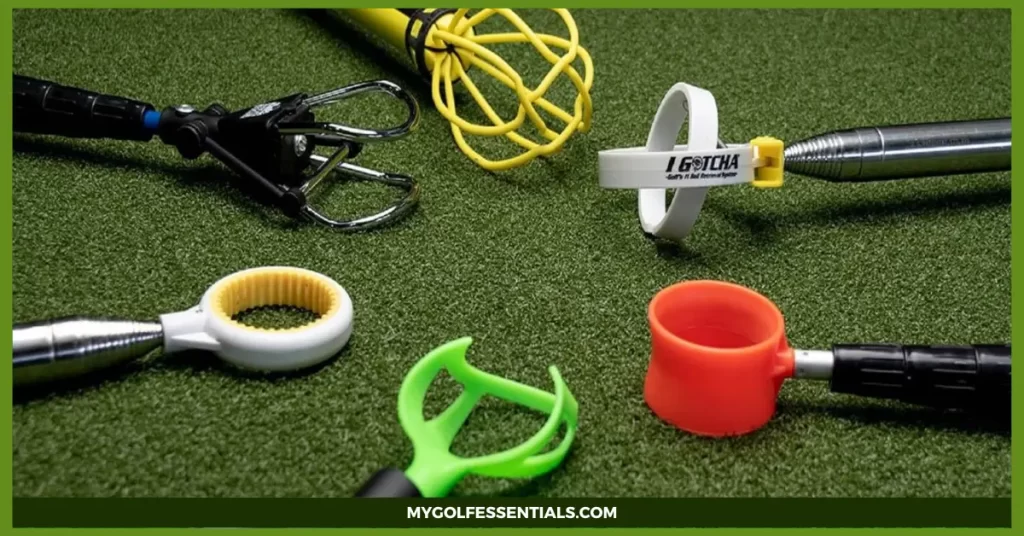
Step into the captivating realm of golf handicaps, where players’ skill levels are precisely assessed to ensure equitable competition within the golfing community. Acting as a vital yardstick, a golf handicap enables golfers of varying abilities to engage in fair play golf and measure their performance. This numerical indicator provides valuable insights into players’ aptitude, allowing them to monitor progress and gauge their standing among peers. Within this discussion, we will explore the intricacies of golf handicaps, unravel the methodology employed for calculation, and analyze the key factors influencing the average golf handicap. So, grab your clubs, prepare to tee off, and join us on an enlightening expedition through the captivating world of golf handicaps.
Defining a Golf Handicap
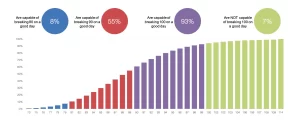
A golf handicap is a numerical measure of a golfer’s potential ability. It determines the number of strokes a golfer needs to complete a particular course, typically compared against par. The lower your golf handicap, the better your performance on that course. An average golf handicap for an amateur golfer can range from 18 to 36, depending on their skill level. Professional golfers usually have a handicap of 0 or below.
Golfers can determine their handicap by submitting scores from previous rounds to the USGA Handicap System and then receive an official USGA Handicap Index®. The Handicap Index is recalculated every time you submit new scores and allows for a comparison of a golfer’s performance over time. The higher the Handicap Index, the more strokes a golfer is expected to take to complete the course.
The world handicap system is designed for players of all skill levels and can create competitive games between golfers who may not otherwise have an even playing field. It also provides an unbiased way to measure a golfer’s progress over time. To improve your golf handicap, practice and study the game, using professional instruction. Dedication and hard work can lower your average golf handicap and help you become a better player.
Slope and Course Rating
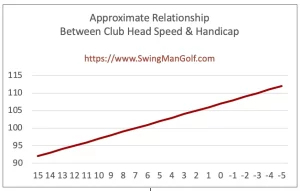
In addition to your golf handicap, the Slope and Course Rating of a golf course is important factors in understanding the difficulty of playing on that particular course. The slope is the USGA rating of the relative difficulty for a bogey golfer compared to a scratch golfer. Calculated on a point system from 55 to 155, with 113 being an average slope rating, a higher number indicates that the course is more difficult for a bogey golfer than a scratch handicapper.
Course Rating is the USGA-calculated measurement of the difficulty of a particular golf course for a scratch or 0 handicap golfer. This rating also uses the 55 to 155-point system, with par equal to 72. If you have a handicap index of 18, you will be playing the course at a rating of 54.
By understanding these two measurements, you can gain an appreciation for how much more difficult or easier it is for different golfers to play on that specific course. For example, if the Slope Rating is 125 and your Course Handicap is 22, then you are playing the course at a rating of 94. This shows that it is more difficult for you than for an average golfer, and helps give you an understanding of how your golf handicap relates to other courses.
These ratings are updated regularly, so check the USGA’s website or contact your local golf course for the most up-to-date information. Knowing a course’s Slope and Course Rating can help you play smarter and better decide which courses to play.
Other Factors That Impact Scoring
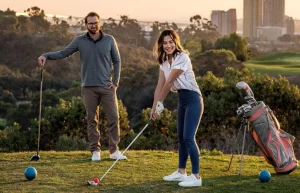
Aside from their skill level and experience, other factors can impact a golfer’s score. For instance, the type, of course, a golfer plays on will have an effect. Golfers playing courses requiring more precision than power often struggle to achieve lower scores.
In addition, the fairway’s weather conditions, terrain, and size can all affect the golfer’s score. For instance, a windy day will make it more challenging for golfers to hit their target and control the ball in the air, while a narrow fairway will mean they need to be precise with their drives.
Calculating Your Handicap
Calculating your golf handicap can be a useful tool for helping you track and improve your game. Your handicap indicates the average number of shots over par that a golfer should typically make during 18 holes of golf. It is determined by taking the difference between your scores and the course rating or par, then adjusting based on the difficulty.
To calculate your handicap, you need to record your scores for each round of golf and then enter them into the USGA Handicap Index Calculator. This calculator will take your scores and determine an average number of strokes over par. You can also use the GHIN system, which golfers in the United States more widely use. This system takes your scores from up to 20 rounds of golf and calculates your handicap.
The average golf handicap for amateur players is around 14-15, but this will depend on the golfer’s skill level and the course difficulty they typically play. Typically, you can expect a lower handicap if you regularly play more challenging courses or are more experienced at golf.
What is the Average Golf Handicap Worldwide?

The average golf handicap worldwide is highly variable. In general, the higher the level of play, the lower the average handicap. In professional tournaments, the average handicap is typically 3 or 4 strokes under par. Amateur players tend to have a much higher average handicap than professionals; in most amateur tournaments, the average sits between 10 and 20 strokes over par.
The average handicap of recreational golfers is also highly variable but tends to be much higher than professionals or competitive amateurs. It is not uncommon for recreational players to have a handicap in their 20s or even 30s. The most accurate way to determine an individual’s handicap is by tracking their scores over time and then calculating their hands using a handicap calculator.
Strategies for Improving Your Game
Now that you know the average golf handicap, it’s time to get serious about improving your game. There are several strategies and tips for improving your overall performance on the course. Here are a few:
1. Practice Proper Form: The golf basics may seem simple but difficult to master. Spend extra time practicing proper form to become more efficient and consistent during your rounds.
2. Get Fitted for Clubs: Having the wrong clubs can lead to inconsistency and poor shots while using properly fitted clubs can make a huge difference in your play.
3. Improve Your Mental Game: While physical ability is important, focusing on developing your mental game is also essential. Learning to focus, stay relaxed, and remain positive during your rounds can help you achieve success on the course.
4. Set Goals: A plan and specific goals for improving your golf handicap are essential to your progress. Setting long-term, manageable goals will help keep you motivated and constantly striving to improve.
Tips for Lowering Your Handicap Score
If you want to lower your average golf handicap, there are several strategies you can employ. First, focus on developing a consistent pre-shot routine. Setting up a plan for each shot before it’s taken helps keep the mind focused and allows for better results. Second, practice proper technique and mechanics, such as addressing the ball correctly and keeping your head behind the ball. Third, work on your short game and practice chipping and putting often. Finally, keep track of your scores as you play, analyze areas you can improve upon after each round, and set achievable goals. Patience and dedication can lower your average golf handicap over time.
Common Mistakes to Avoid
One of the most common mistakes golfers make is underestimating their average golf handicap. Although it may be tempting for golfers to assume they have a lower handicap than they do, this can lead to frustration and difficulty when playing against other players with more accurate scores. To accurately assess one’s handicap, keep track of all rounds and calculate the average. Additionally, if you are playing with other golfers with a lower handicap, it is important to play at their level. Do not be afraid to adjust your score accordingly and challenge yourself. Knowing your average golf handicap can help you play more strategically on the course and improve your performance over time. Extensive improvement can be made by taking the time to accurately assess one’s golfing skills. Taking the time to understand your handicap is important and should not be overlooked. With the right approach, you can quickly better understand your average golf handicap and use it to your advantage when playing with others. Doing this will help you improve faster and become an even better golfer!
Why Does Golf Handicap Matter?
A golf handicap is an important indicator of a golfer’s skill level and helps to even the playing field for golfers of different abilities. It gives everyone a chance to compete against each other fairly, no matter what their skill level may be. A lower handicap indicates a player is more skilled, while a higher one implies less experienced. The average golf handicap is around 18, which is considered a good score for recreational players. Knowing what your handicap is can help you gauge how you’re doing compared to other golfers and indicate where you should aim to improve your game. With the right practice and dedication, aiming for a lower handicap can be a great goal to set for yourself.
Handicap Doesn’t Mean Average Golf Score
Having an average golf handicap does not necessarily mean that you have an average golf score. It is important to understand the difference between a golf handicap and a golf score. A golf handicap is calculated using your scores from specific rounds of golf, whereas an average golf score is simply the total number of strokes it takes you to complete 18 holes divided by 18.
Knowing and understanding your golf handicap is important for more than just keeping score. Your handicap allows you to compare your performance with other players. A handicap index is a numerical measure of an individual golfer’s ability, allowing players of different abilities to compete on an even playing field. It can be calculated by taking the average of the best 10 scores out of the last 20 rounds played. Some amateur golfers use their average handicap index to enter lower-level tournaments and show off their skills in friendly matches against other players.
The USGA (United States Golf Association) has established a maximum handicap index for men and women, currently 36.4 for men and 40.4 for women. Any score above these numbers is considered “over the limit,” which means your handicap index can no longer be used. This doesn’t mean you are a worse golfer than someone with a lower handicap index, but simply that there was too much disparity between your best and worst scores to calculate an accurate number.
What’s a “Good Golf Handicap?
When it comes to golf, there is no single answer as to what a “good” handicap is. Your golf handicap expresses your potential ability in the game and measures how many strokes over or under par you are likely to shoot in a round of 18 holes. Generally speaking. However, most experienced players agree that having an average golf handicap of 18 or lower is considered a good score.
Handicap scores below 10 indicate that the player has achieved scratch golfing, meaning they are playing professionally. On the other hand, handicaps between 11-20 are generally respectable and reflect a competent amateur skill level. Anything above 20 is still considered playable but usually indicates a recreational level.
Ultimately, there is no fixed benchmark for a good golf handicap; it all depends on individual goals and expectations. What matters most is that you are enjoying your game and playing to the best of your ability! With dedication and determination, anyone can improve their handicap – so don’t be afraid to take on the challenge!
No matter what your handicap may be, remember that golf is meant to be fun and enjoyed by all. Even if you don’t end up with a low enough number to cut a championship event, as long as you’re out on the course improving your game and having a good time – that’s success in itself!
Becoming a Scratch Golfer
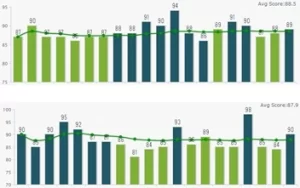
Becoming a scratch golfer can be an exciting yet daunting prospect for many golfers. A scratch golfer has a zero handicap, meaning they should be able to shoot par or better on any course. While this may seem like the ultimate goal for golfers, there are certain things to consider before embarking on such a journey.
First, you should evaluate your current game and determine what level of handicap you currently have. On average, most golfers have an 18-hole handicap between 0 and 20. If you’re above this average, it’s important to look at where most of your strokes are coming from to focus on the areas needing improvement to reach a scratch golfer level.
Next, you should take the time to improve your game in the areas that need it most. Dedicate yourself to practicing and mastering the subtleties of your swing, short game, course management and mental approach to golf. Not only will this help you become a better golfer, but it will also help you understand how to best approach a course and the game of golf in general.
Finally, ensure you get regular instruction from a PGA tour teaching professional. This will help you refine your game and identify any areas where you need to focus more attention. It is also beneficial to track your scores over time to monitor your progress and ensure that you are consistently improving each round.
Becoming a scratch golfer is an achievable goal for many golfers. It begins with recognizing your current average golf handicap and determining which areas need improvement. Then, dedicate yourself to practice and use instructional opportunities to refine your game. With the right approach, you can reach the ultimate goal of becoming a scratch golfer!
Tips for Keeping Track of Your Scores
Keeping track of your scores is a big part of improving your golf game. Doing this will help you better understand areas you can focus on and improve upon. Here are some tips for keeping track of your scores:
1. Write down or electronically log all your scores after each round. While it may seem tedious, this helps you keep track of your progress and helps you gauge your improvement over time.
2. Keep notes after each round that can help you identify areas for improvement. Notes could include things such as: what golf clubs you used, or how well you did on certain types of shots. Identifying these small details can be key to improving your game.
3. Calculate your average golf handicap after each round and keep track of it. Your average handicap is a great way to measure your improvement over time. It’s calculated by taking your most recent 10 scores and averaging them out.
4. Try tracking other metrics such as fairway hit, greens in regulation, putts per hole, or the number of sand saves. This can help you identify areas where you’re most successful and focus on that to improve your game.
5. Regular lessons with a PGA Professional will also help you understand your swing better and provide guidance on practice drills that may help you improve in certain areas.
FAQs
What is an average golf handicap?
An average golf handicap is a number that reflects a golfer’s skill level. It is used to measure the relative difficulty of courses and to give players of different abilities a way to compete against one another. Generally, an average golf handicap will range between 20 and 30 for male amateur golfers, while female amateur golfers tend to have handicaps between 25 and 35. Professional golfers generally have very low handicaps, often in the single digits.
How is a golf handicap calculated?
A golf handicap is calculated using the USGA Handicap System, which considers your scores from previous rounds and the difficulty of your courses. It weighs more recent scores more heavily than average score to provide an up-to-date measure of your skill level. To calculate your handicap, you must report your scores to a golf club or association using the USGA Handicap System. They will then use those scores to determine your handicap.
What is the purpose of a golf handicap?
The purpose of a golf handicap is to enable players of different skill levels to compete against each other. It also provides a way to measure the difficulty of different courses. This means that players can play against one another on different courses and still play on a level playing golf field. Those with higher handicaps have more strokes allocated to them, allowing them to compete with those with lower handicaps.
How often should I update my golf handicap?
Your golf handicap should be updated at least once a month. It is important to ensure that your handicap stays up to date and reflects your current playing ability, so it is best to recalculate it after every round of golf you play. That way, you will always have an accurate measure of your skill level.
Is there a maximum golf handicap?
No, there is no maximum golf handicap. The USGA Handicap System allows for an unlimited number of strokes to be allocated to each player, and as such, your handicap can theoretically go up indefinitely. However, it’s important to remember that the higher your handicap becomes, the more strokes you will need to play up to par, so it is best to strive for a lower handicap.
The bottom line is that an average golf handicap can be between 20 and 30 for male golfers, while female amateur golfers tend to have handicaps between 25 and 35.
Conclusion
Golf average handicaps are a useful way for players of all abilities to compete fairly with one another. It’s important to understand the system and how it works to accurately measure your progress as you gain more experience on the course. On average, most golfers have an 18-hole Handicap Index between 10 and 20, but there is no definitive average official golf handicap. Every player should strive to improve their game and reduce their handicap, an important measure of progress. Dedication and practice allow all golfers to improve and lower their handicaps.

